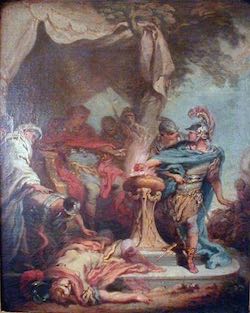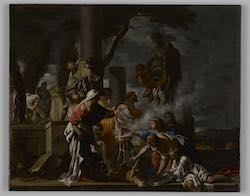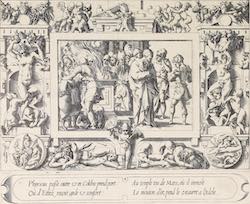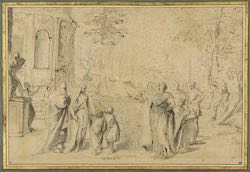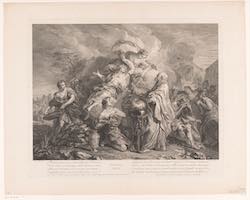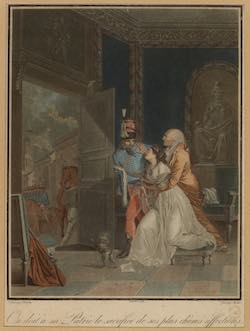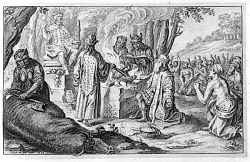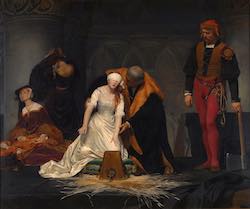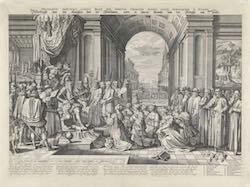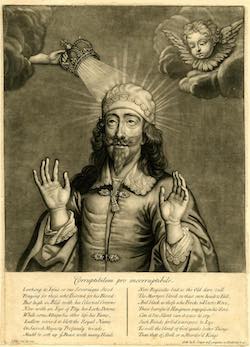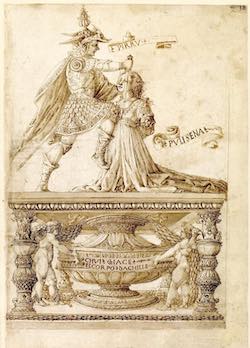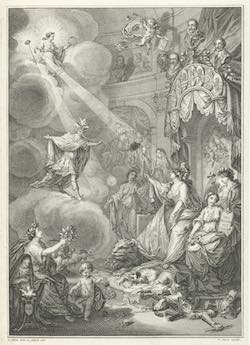Topic: 3. Sacrifice and politics (16th-18th Century)
During the transformative period of the 16th to 18th centuries, the notion of the State evolved into a nearly mystical entity, perceived as immortal and worthy of the ultimate sacrifice. This section delves into the complex interplay between sovereignty, resistance, and sacrifice, a theme explored by early proponents of political tolerance. It also examines revolutionary acts and regicide, viewed through the lens of sacrificial rites. This section includes early modern printed and iconographic sources, along with a comprehensive bibliography from the 19th to 21st centuries, providing a historical and modern perspective on this complex theme
Mucius Scevola in front of Porsenna (18th Century)
Musée de l’Hôtel Sandelin, Saint-Omer
King Solomon Sacrificing to the Idols (1640(?))
Yale University Art Gallery, New Haven, CT
The Sacrifice of King Oetes (16th Century)
from: Gohory, Jacques. Livre de la Conqueste de la Toison d'or, par le Prince Jason de Tessalie : faict par figures avec exposition d'icelles, [Paris], n.p., 1563, no page
Bibliothèque Nationale De France, Paris
Il est glorieux de mourir pour sa patrie (1795)
Musée Carnavalet, Paris
A king sacrifices an animal in front of the statue of Thor (1639)
RKD – Nederlands Instituut voor Kunstgeschiedenis
Martyrdom of St. John of Nepomuk (ca 1750)
National Museum,Warsaw
Brutus Sons Corps (1789)
Museée du Louvre, Paris
Oath of the Horatii (1784)
Musée du Louvre, Paris
Fox. The Historical Painter (1784)
British Museum, London
The Coronation of Louis XVI (18th Century)
Musée du Louvre, Paris
The Sacrifice of Polyxena (ca 1470-1475)
from: The Florentine Picture-Chronicle' page from the album (recto of 1889,0527.58): Pyrrhus (Neoptolemos) sacrificing Polyxena on the tomb of his father Achilles
British Museum, London

